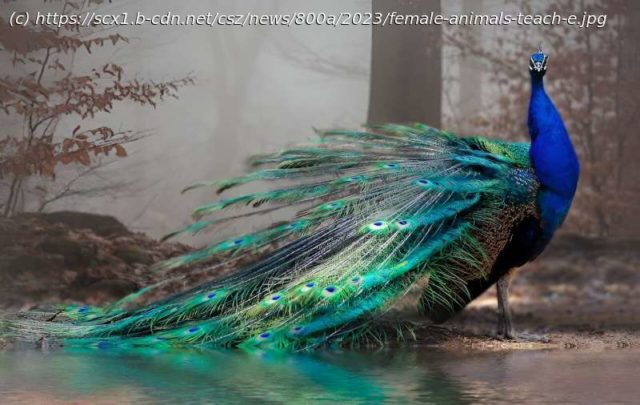My friend recently changed their favorite celebrity crush from Anna Kendrick to Lily James. While some people could see the attraction, others might not. So what is it that attracts us to potential mates? A new study suggests that female animals learn from other females to prefer distinctive males as mates.
My friend recently changed their favorite celebrity crush from Anna Kendrick to Lily James. While some people could see the attraction, others might not. So what is it that attracts us to potential mates? A new study suggests that female animals learn from other females to prefer distinctive males as mates.
Sexual selection involves the evolution of traits such as the long, elaborate tail of the peacock. These traits have evolved to enhance an animal’s chance of attracting a mate, rather than to enhance survival ability. A weighty, colorful tail is a hindrance if you’re trying to evade a predator.
Generally, males compete for access to females, as the male investment in offspring –- often only sperm—is much less substantial than the effort a female puts in, producing eggs (which are larger than sperm), pregnancy and probably raising the offspring. So it is much more costly for a female to mate with a poor-quality male than vice versa, as the male can move quickly on to the next female.
This has led to the evolution of a plethora of sexually selected male traits in the animal kingdom, and some very choosy females.
Historically, scientists focused on the interactions between males and often ignored the way females shaped evolution. But now researchers are paying more attention to the fascinating effects of female agency.
The new study, from Florida State University in the US, developed a mathematical model to try and explain some of the gaps in sexual selection theories.
First, it’s helpful to understand what research has shown about what makes a male attractive in the animal kingdom. In terms of looks, the males with the largest cheek pads or flanges are most appealing to female orangutans, whereas males with the longest “swords” drive female swordtail fish wild.






